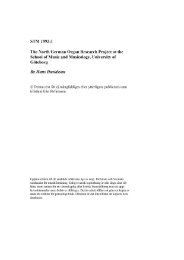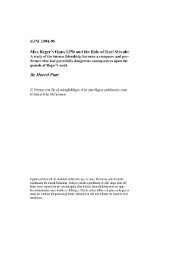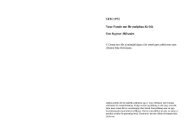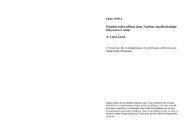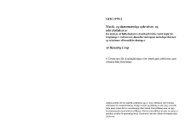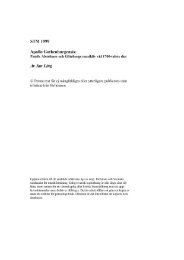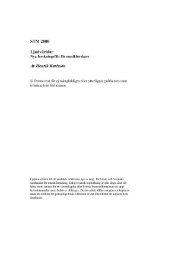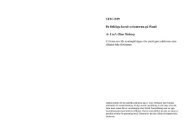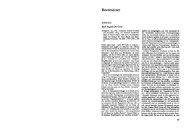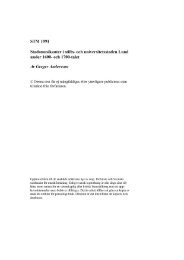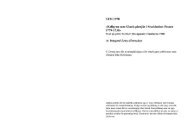Nicolai
Nicolai
Nicolai
Create successful ePaper yourself
Turn your PDF publications into a flip-book with our unique Google optimized e-Paper software.
ist die eines Ansprechens und Mitführens, das sich bis zum Hinreissen stei-<br />
gern kann.<br />
2) die Schicht, in welcher der Hörenden bei tieferem Eindringen in die Kom-<br />
position von diezer zu innerst ergriffen wird. Sie ist nicht aller Musik eigen,<br />
sondern nur Werken von einer gewissen Grösse und Tiefe. Diese Schicht<br />
wühlt die Seele auf, ist offenbarend und verkündigend, holt aus der dunklen<br />
Ich-Tiefe des Hörenden Verborgenes herauf. In den Bahnen dieser Schicht<br />
bewegt sich fast die ganze ernste Musik. Sie ist ausserordentlich differenziert<br />
und hoch individualisiert.<br />
3) die Schicht der letzten Dinge, man kann auch sagen, die metaphysische, in<br />
der Art, wie Schopenhauer ein Erscheinen des Weltwillens meinte, es braucht<br />
nicht das zu sein, wohl aber wird es stets den Charakter einer Fühlung mit<br />
dunkel geahnten, schicksalhaften Mächten haben. Diese Schicht ist nur selten<br />
wirklich aufweisbar.<br />
The third and last inner stratum of the musical work, despite its rareness, is<br />
easy to discern, and is prominent in religious music. Here it is not dogmatic reve-<br />
lation but that of the human soul and has the character of the metaphysical.<br />
Moreover, even secular music, says Hartmann, manifests the same phenomenon<br />
of the third inner stratum: symphonies, quartets, sonatas, baroque concertos, and<br />
specifically Bach’s preludes and fugues.<br />
It should be noted also that Hartmann considers greatness (Grösse) to apply<br />
even to miniature pieces (äusserlich kleinen Werken); by greatness is here meant<br />
”innere Grösse” (one thinks e. g. of François Couperin).<br />
Also, according to Hartmann, the greater and richer the tonal structure, the<br />
more the emotional element (Seelisches) can make its appearance. They are in<br />
error who think they can skip over the structural in a tonal work; who are<br />
content to experience only a ”leichtes Mitschwingen”. There are, of course, com-<br />
posers who ”leichtansprechende Stücke schaffen, welche keinen grösseren An-<br />
spruch an das musikalische Verstehen stellen” (p. 207). Such music attracts many<br />
people who seek relaxation and amusement. Although this type of music has its<br />
justification, one looks in vain for any greater emotional content.<br />
Hartmann turns next to the problem of program music. He understands this<br />
concept in the wide sense-including the art song, song for chorus, and opera.<br />
There is something special about music in that it is able-as a ”second art”-to<br />
serve a ”first”, namely poetry. ”Second art” here means dependent; in many<br />
cases interpreting, serving, illustrating. The relationship of music to poetry is<br />
quite different from that of the art of theater to the latter: ”Die Musik bringt<br />
nicht den Inhalt zur ’Darstellung’, sie stellt auch gar nicht dar-darin kann sie<br />
es der Dichtung nicht gleich tun-, sondern leiht nur ihr Vermögen, reine Ge-<br />
fühlstöne ’erklingen’ zu lassen, weil die Dichtkunst als blosse Wortkunst das nicht<br />
kann.” (P. 207.)<br />
But the main question is: how can music take up and present such a special<br />
content as human life, which by no means comprises only emotions, but even<br />
persons, happenings, destinies, conflicts, etc.? We can appreciate and consider<br />
valid a musical program knowing the title beforehand. But it would not be<br />
expected that we could tell about the program of a piece which we heard not<br />
knowing the title. We would probably just guess at related programs-reIated<br />
in the sense of having the same emotional tone (Gefühlston), which is quite<br />
general. Thus music cannot really present the content of a program but can only<br />
say what is sayable in tone. This ”Gefühlston”, however, can be more adequately<br />
expressed by music than by poetry. Thus the possibility of the lied. In the text<br />
of the art song, i. e. lyric poetry, the main thing is the mood and emotions.<br />
Music can grasp and express these, and there is a great deal of freedom in the<br />
choice of musical motives. When Loewe and Schubert each compose a lied to<br />
the text of Goethe, they choose different musical themes which each underline<br />
a different aspect of the poem.<br />
Hartmann thinks there is a questionable principle inherent in dramatic music,<br />
in opera. Here where so many elements come together, there is a danger to the<br />
unity of poetry and music. On the stage the dramatic element is of primary im-<br />
portance. But music has the tendency to draw the happening which it accom-<br />
panies into the lyrical, and this is hardly compatible with action and dramatic<br />
dialogue. Hartmann discusses problems of the older Italian opera, the opera reform<br />
of the eighteenth century, and the Wagnerian leitmotif technique. The problem<br />
is always a conflict between the dramatic and the musical. Are there cases where<br />
the text in diction and rhythm really meets the demands of the music? Hartmann<br />
believes so; in Hugo Wolf and Brahms, for example-but this is not the rule.<br />
Hartmann includes a section on the performing artist, his role and ideal. For<br />
the right musical effect two conditions must be met: the artist must technically<br />
master his instrument (including the voice) and he must be congenial with the com-<br />
poser. There are, accordingly, two types of performing artists: ”auf der einen<br />
Seite steht im Extrem der geschulte Musiker, der die technische Beherrschung<br />
hat, aber das Innere schuldig bleibt, weil er die Tiefe nicht hat, es selbst zu<br />
empfinden; meist ist es so, dass er in seinen Darbietungen schon daraufhin die<br />
Auswahl trifft: Konzertstücke, mit denen er glänzen kann. Auf der anderen Seite<br />
steht im Extrem der Dilettant, der die Musikalität hat, tieferen seelischen Gehalt<br />
herauszuhören, aber nicht die Technik beherrscht, ihn erklingen zu lassen.” (P.<br />
210.) Only in rare cases, Hartmann believes, is technique matched with musical<br />
maturity.<br />
I will conclude this exposition with a few words about Hartmann’s genera of<br />
the beautiful. The most important of these are: the sublime (das Erhabene), the<br />
gracious (das Anmutige), and the comical (das Komische). The sublime is mani-<br />
fested in: the great (das Grosse, Grossartige), the serious (das Ernste), the solemn<br />
(das Feierliche), the profound (das Tiefsinnige), the monumental and the tragic,<br />
etc. I would consider this aesthetic quality to be expressed in a great deal of<br />
the music of the Barque era, but even in Mozart’s Magic flute-act two, scene one,<br />
”The march of the priests” and ”O Isis und Osiris”. Here the aspect of the solemn<br />
is prominent. Indeed, this quality is present in music from all periods.<br />
Related to ”das Anmutige” are the following qualities: the charming, attractive<br />
(das Reizende), the amiable (das Liebenswürdige), and the graceful and elegant



